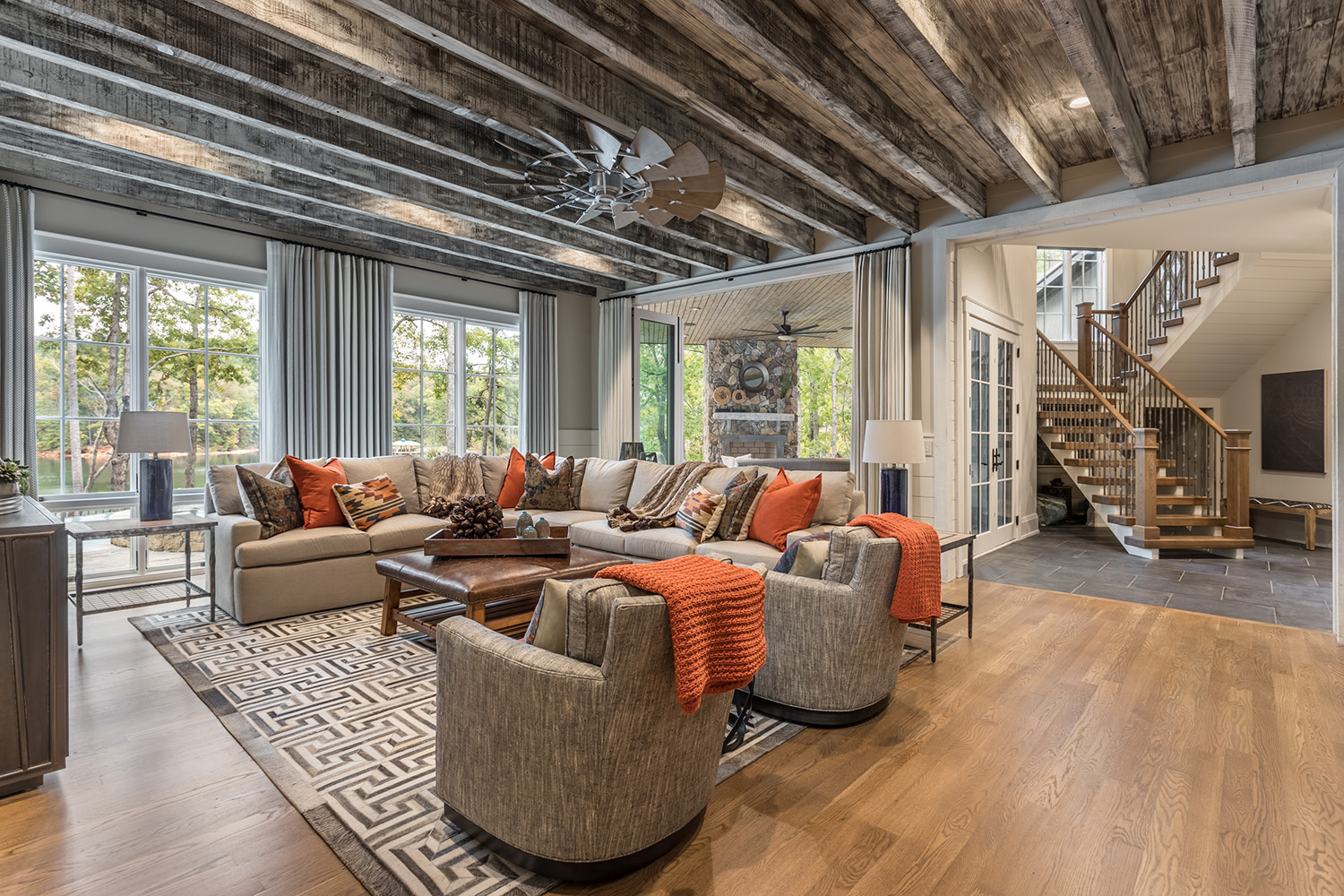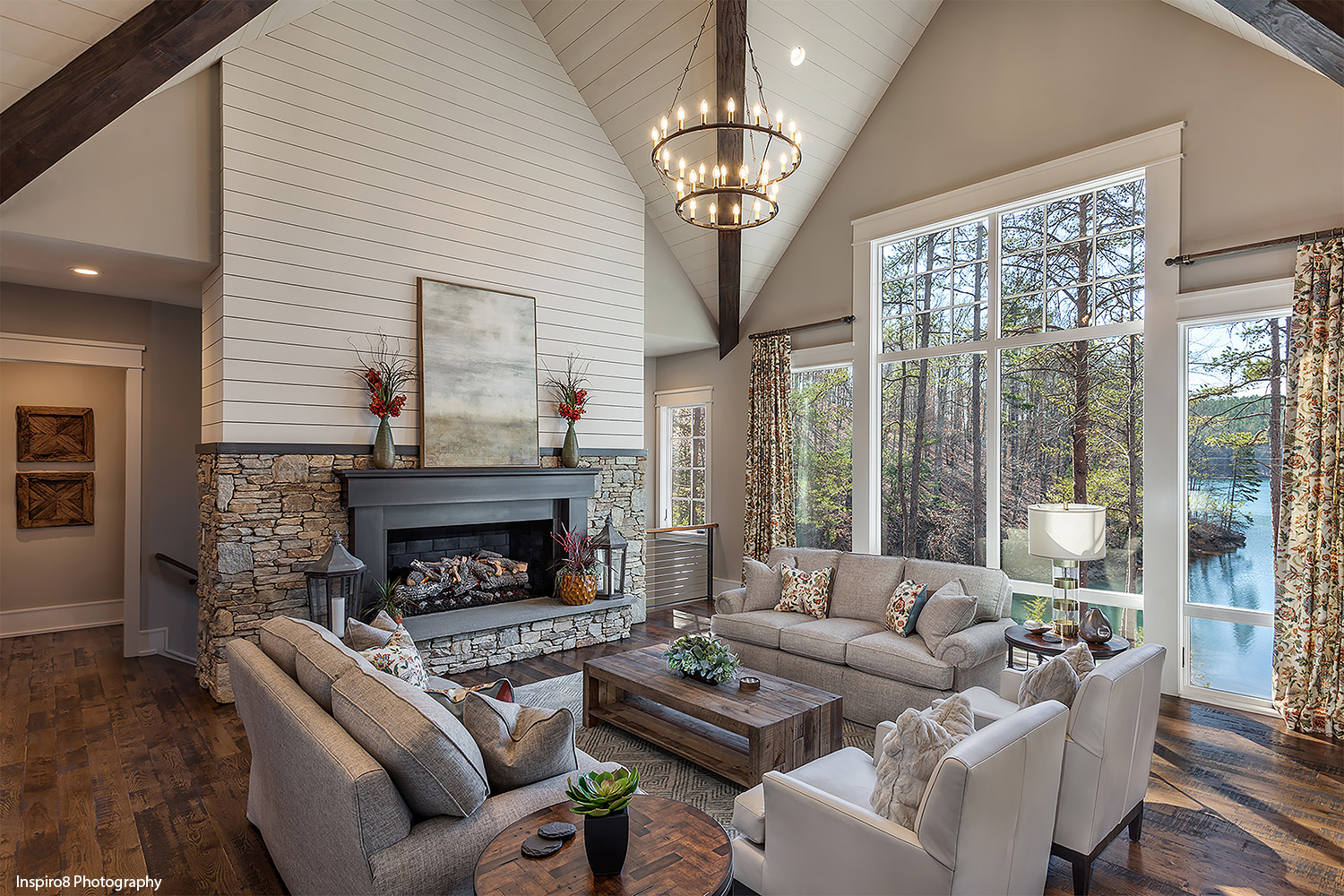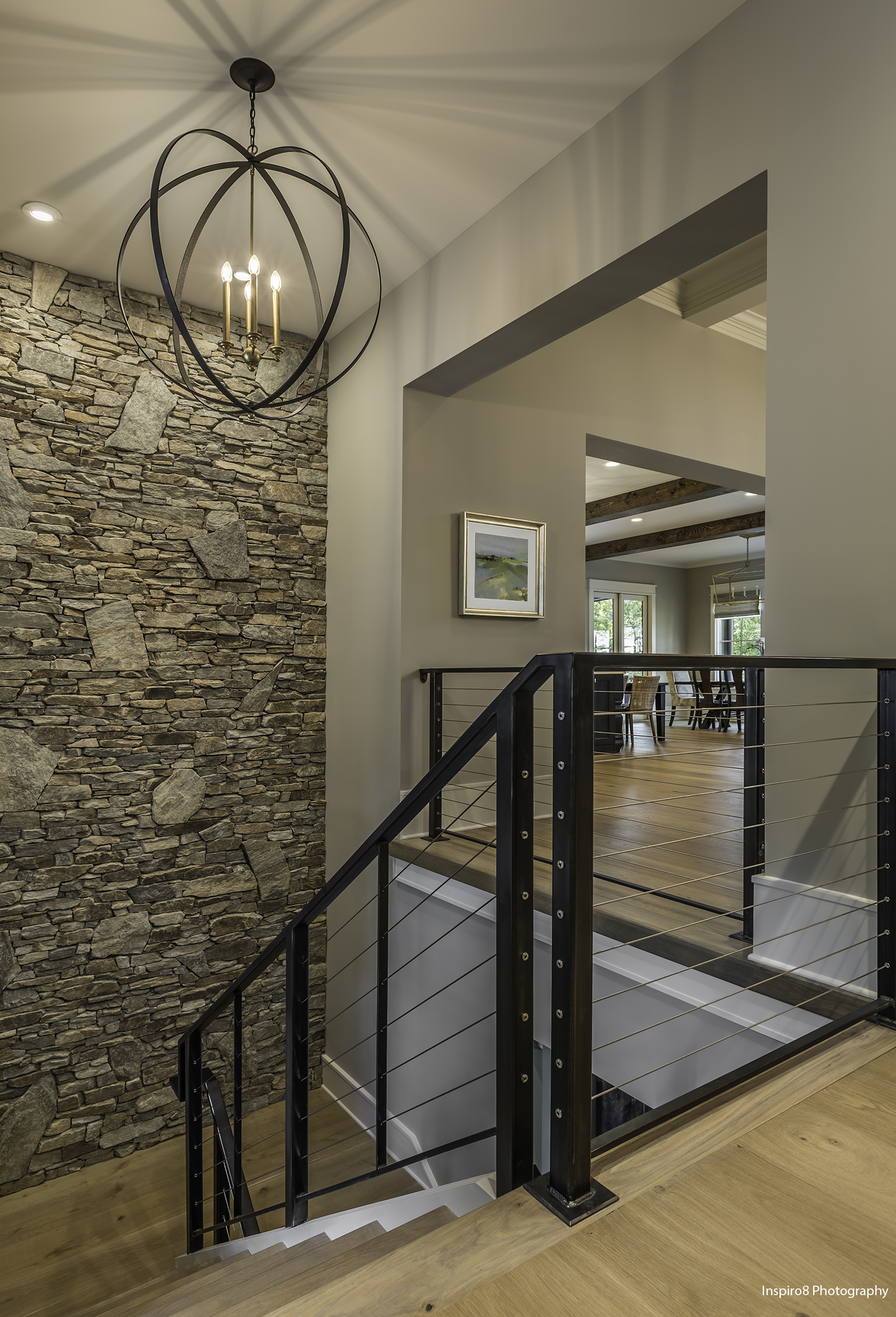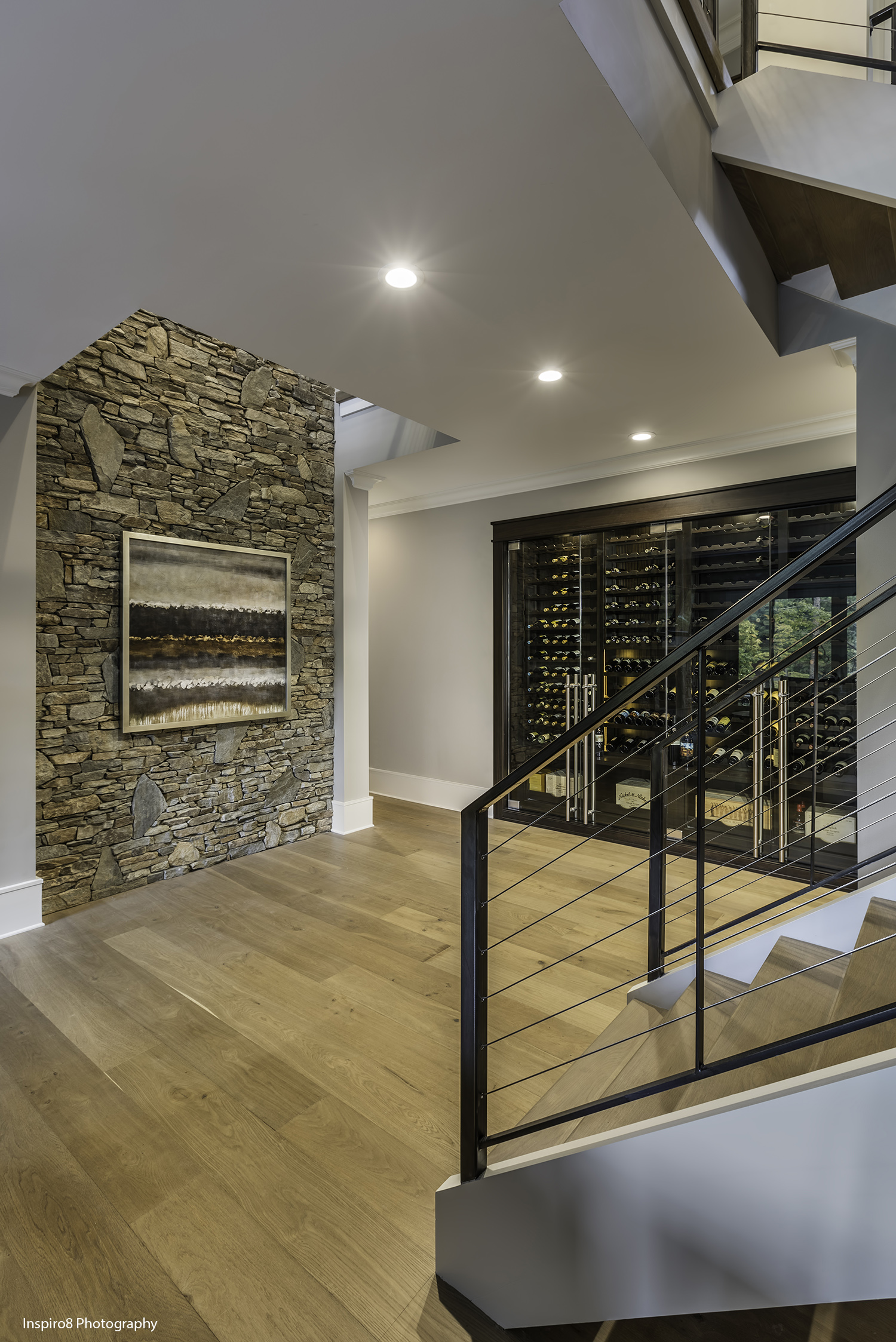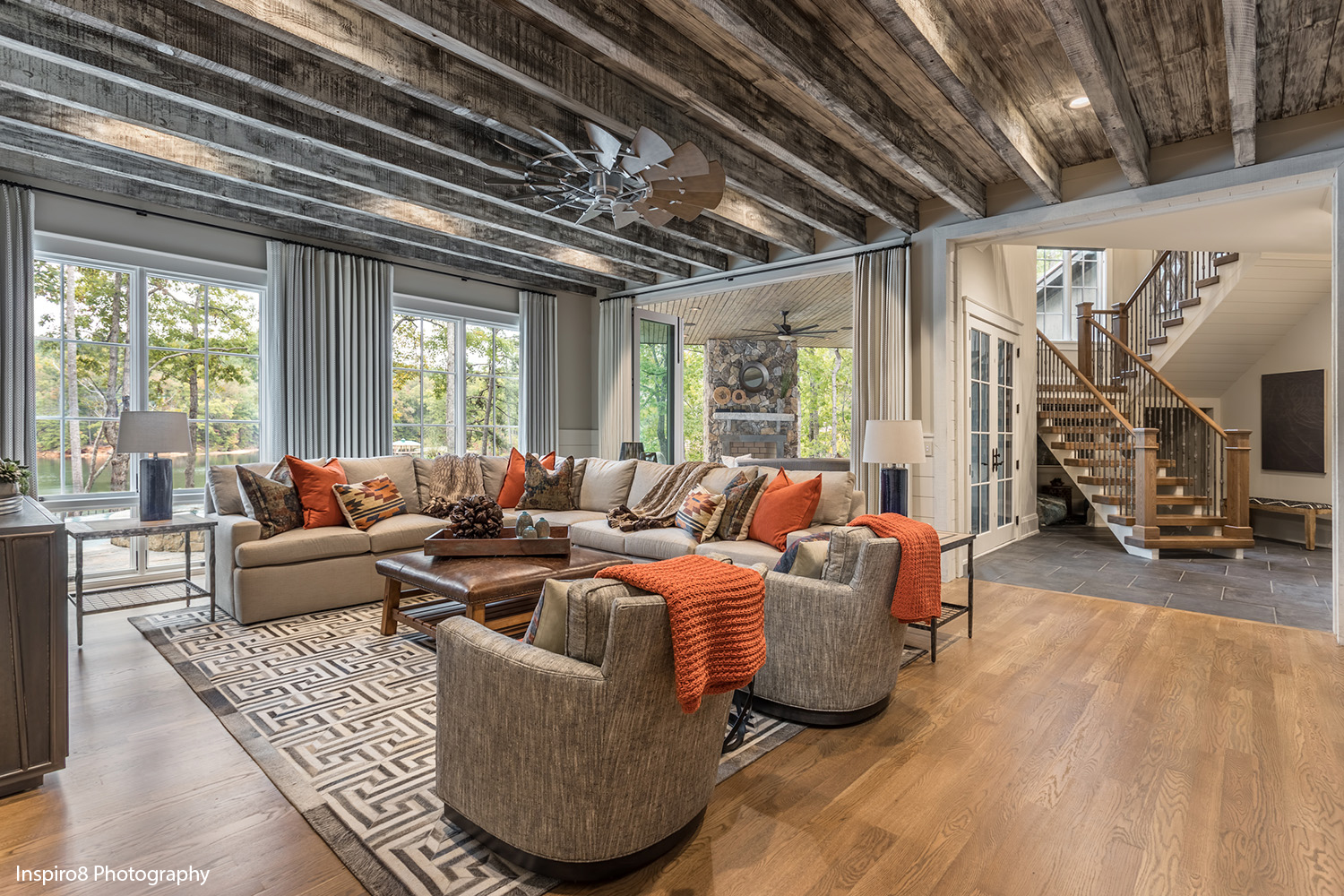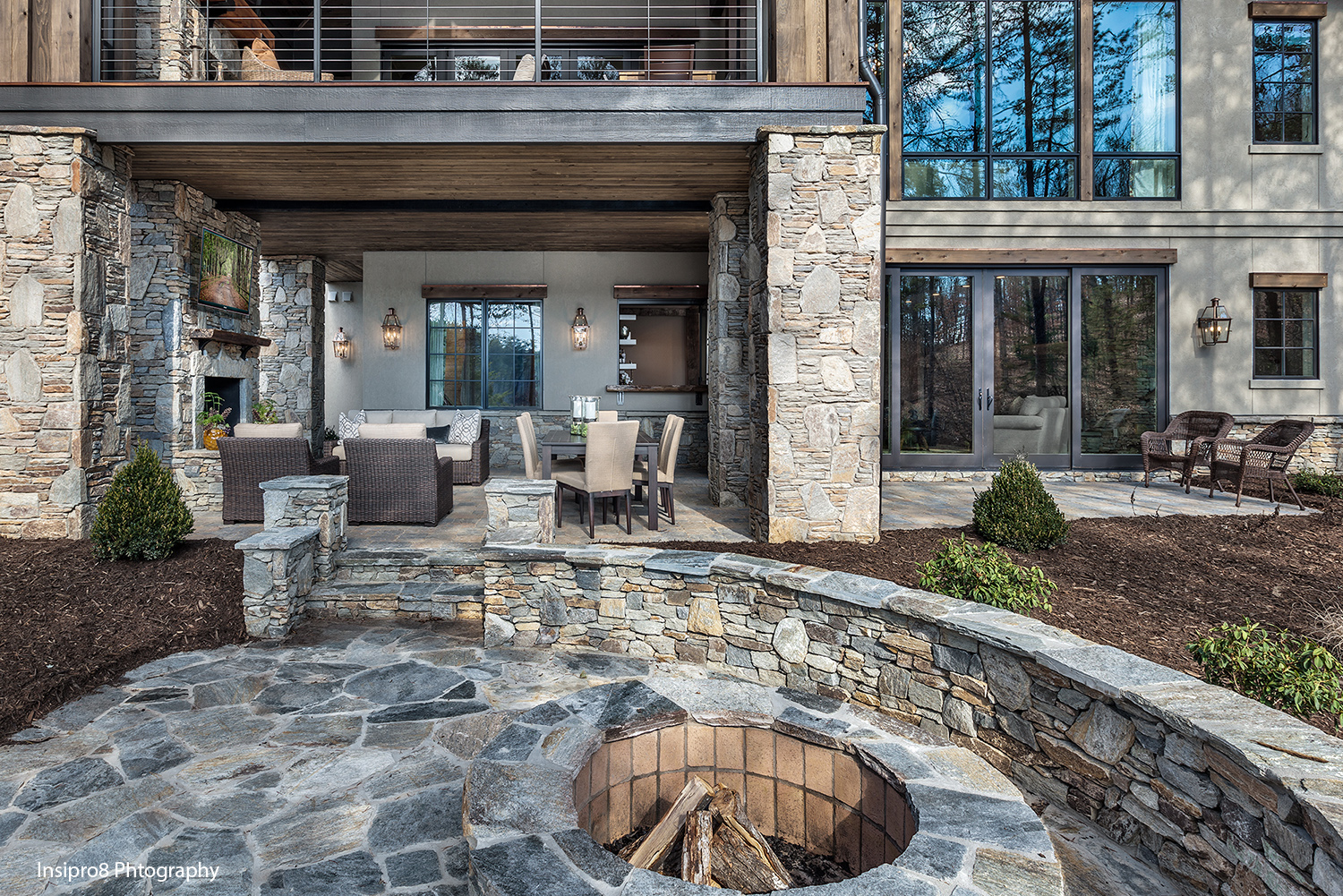Walkout basements are a great solution for sloping, downhill sites (Something my fellow Floridians don’t have to worry about). However, if you plan on finishing out this space, please, do not call it a basement! Call it a terrace level or lower level, just about anything other than “basement”. When people think of basements, they think of dark, damp, smelly spaces. No one wants that. In older houses, that might have been where the furnace lived – big, noisy and scary.
Walk-out basements lower levels can be tricky. They are also more expensive to build than a simple crawl space or even slab on grade. So you want to reap the most rewards as possible from this costly foundation. Let’s discuss how. A special thank you to Tribus Design Studio and Dillard-Jones for supplying the stunning spaces (the one above this paragraph not included).
Stairs
First, how do you get there? A stair of course! The path to this lower level should be inviting, meaning that they should NOT be straight, narrow, and with a door at the top. That just brings us right back to the damp smelly B-word we’re trying to avoid. Instead, consider a landing, if it is for a few steps.
Stairs can be sculptural and interesting when they ascend to an upper level. You can view the treads, stringer, and handrail – all at eye level. But stairs going to a lower level often suffer from limited visibility and are therefore less interesting. To make them more visually appealing, you can create an open, two story space to take in the sculptural nature of the stairs. Top them off with a striking pendant fixture to accentuate and celebrate what lies below.
Arrive to Light
Now, imagine you’re walking down the stairs. What to do first encounter at the bottom of the stairs? A wall? A dark room? I know many of us grew up in houses like this, but it doesn’t have to be this way! You need to position your stairs so you arrive at light; preferably a gathering or game room. Make sure to protect the view from this room since it is the first impression of the lower level. By this, I mean don’t look at the side of the air conditioner condenser unit.
Maximize the Light
Since most walkout basements have their light coming from just the downhill side of the home, make sure to maximize and capture as much natural light as possible. This means first arranging this level so bathrooms and closets aren’t on the downhill side of the plan. The same holds true for mechanical and other storage spaces. Next, don’t skimp on the size and number of these windows. A couple extra windows are nothing compared to the investment of the foundation system. Hopefully, there is the opportunity to have sliding glass or French doors opening to a patio or outdoor space. Would a firepit or spa be over the top? Could you really pass on that?
Avoid Low Ceilings
Well, duh, right? But even the best laid plans by mice and architects can go astray if you don’t take into consideration the plumbing and mechanical from the floor above. Suddenly, what was intended to be a 9’ ceiling has beams. Then there’s the pipes and ducts that must find their way from one side of the building to the other without going through the beam. If you can use open web floor trusses, this is a big help. Plan ahead to avoid unhappy surprises during construction.
Appealing Ceilings
You might be wondering why an architect from Florida is going on and on about basements. I first encountered basements when I was in high school and had just moved from Los Angeles, CA to Centerville, Ohio. Quite a change! Many of these basements were born out of the need to get below the front line with little consideration to the space that was created. Then as folks wanted to capture this space and started to finish them out, they had to add a ceiling. Even the “nice” ones often used acoustical tile ceiling. This was a “do-it-yourself” solution and it also allowed access to pipes and ducts. Another big yuck. A thoughtful basement ceiling might use drops to create interesting coffered or beamed ceilings.
Make it worthwhile
If you want to sell a house with a walk out lower level for maximum dollar, you must make it worth the journey down the expanse of the foundation. Are you up to the challenge?
Send me pictures of your best walk out lower level. Oh – and if you have a photo of a bad “basement”, you know I love to look at those!
Categorized in: New Design Options
This post was written by Housing Design Matters


